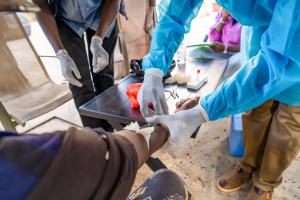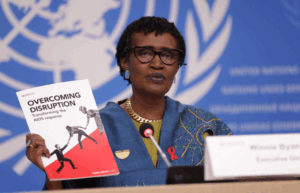Amid growing global instability, the power of organized criminal groups has increased, and drug use has reached unprecedented levels, warns the United Nations Office on Drugs and Crime (UNODC) in its annual World Drug Report released Thursday.
In 2023, nearly 316 million people used a drug—excluding alcohol and tobacco—representing 6% of the population aged 15 to 65, compared to 5.2% ten years earlier.
Cannabis remains the most consumed drug (244 million users), followed by opioids (61 million), amphetamines (30.7 million), cocaine (25 million), and ecstasy (21 million).
The report warns that the proliferation of crises and population displacement could further increase these numbers, highlighting that new vulnerable groups are being exposed to drug use or trafficking.
A Shifting Criminal Landscape
While Latin America remains the region most affected by drug-related crime—especially due to narcotrafficking—Europe is not spared. The report notes a surge in violence across the continent, notably driven by the rise of criminal groups originating from the Western Balkans.
Cocaine trafficking, in particular, is destabilizing entire economies, deterring investment, and weakening local communities. In 2023, global cocaine production, seizures, and consumption reached record highs, making it the fastest-growing illicit drug.
Cocaine Breaks All Records
According to the UNODC, illegal cocaine production exceeded 3,700 tonnes in 2023, an increase of nearly 34% compared to 2022. This surge is largely due to the expansion of coca cultivation in Colombia, where high-yield production zones are becoming increasingly concentrated.
In Bolivia, cultivation levels remained stable in 2023, while Peru saw a slight decline. However, global cocaine seizures surged, reaching a record 2,275 tonnes—a 68% increase from the 2019–2023 period. Usage has followed a similar trend: 25 million users in 2023 compared to 17 million in 2013.
Traffickers are expanding into new markets in Asia and Africa, even as the primary routes continue to run from the Andean region to North America and Europe.
Ecuador Caught in the Crossfire
The impact of cocaine trafficking is especially visible in Ecuador, where increased flows from Colombia have triggered a wave of deadly violence. Local and transnational criminal groups are clashing over control of trafficking routes, worsening insecurity nationwide.
In Western and Central Europe, the effects of cocaine consumption are also becoming increasingly evident: rising usage intensity, hospitalizations, treatment requests, and drug-related deaths.
A Heavy Environmental Toll
Beyond the health and security consequences, the report also highlights the environmental impact of drug trafficking, including in Europe. Drug cultivation and production contribute to deforestation, alter land use, and pollute ecosystems.
Waste from drug manufacturing is dumped into the air, soil, and waterways, exacerbating biodiversity loss, public health risks, and climate change.
Criminal Groups Exploit Crises
Though difficult to quantify precisely, the UNODC estimates that drug trafficking generates hundreds of billions of dollars annually for criminal networks. These groups invest in technology to encrypt communications, streamline logistics, and constantly seek new routes and markets.
“This edition of the World Drug Report shows that criminal groups involved in drug trafficking continue to adapt, exploit crises, and target the most vulnerable populations,” said UNODC Executive Director Ghada Waly.
According to the agency, mapping these networks would help identify their weaknesses, pinpoint key players, and target intermediaries. Judicial and law enforcement authorities must therefore invest in cutting-edge technology and strengthen specialized training.
Half a Million Preventable Deaths
The human and social cost of inaction is staggering. In 2021, drug-related disorders caused nearly half a million deaths and led to the loss of 28 million healthy life years (DALYs), due to disease and premature death.
Yet in 2023, only one in twelve people suffering from addiction had access to treatment.
“We must invest in prevention and address the root causes of drug trafficking at every stage of the supply chain. We need to scale up responses by leveraging technology, strengthening cross-border cooperation, providing alternative livelihoods, and taking judicial action to target those fueling illicit drug networks,” urged Waly.
And she concluded:
“With a coordinated and comprehensive approach, we can dismantle criminal organizations, enhance global security, and protect our communities.”







OTHER ARTICLES
Zambia : Health Sector Progress Update
Rift Valley Fever in Senegal: On the Frontline to Protect Communities
Zambia : commemorates world AIDS day